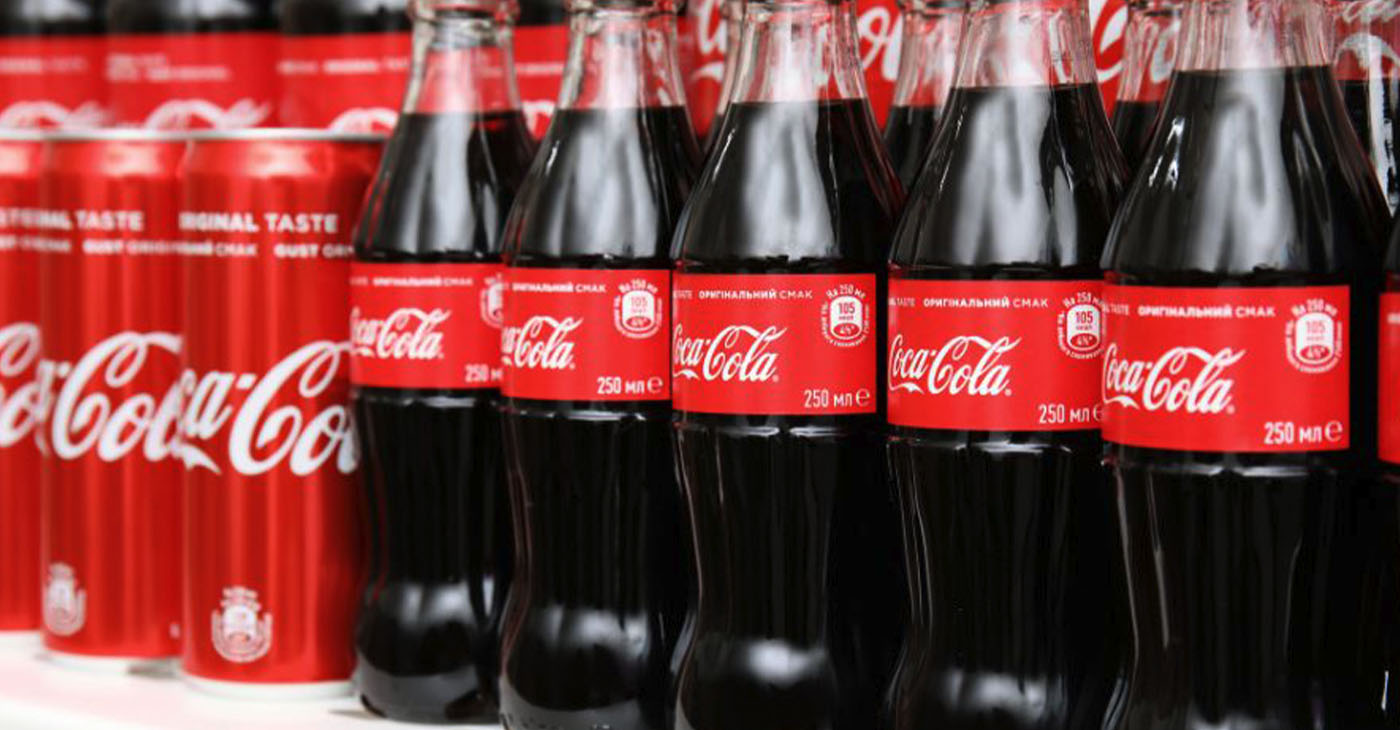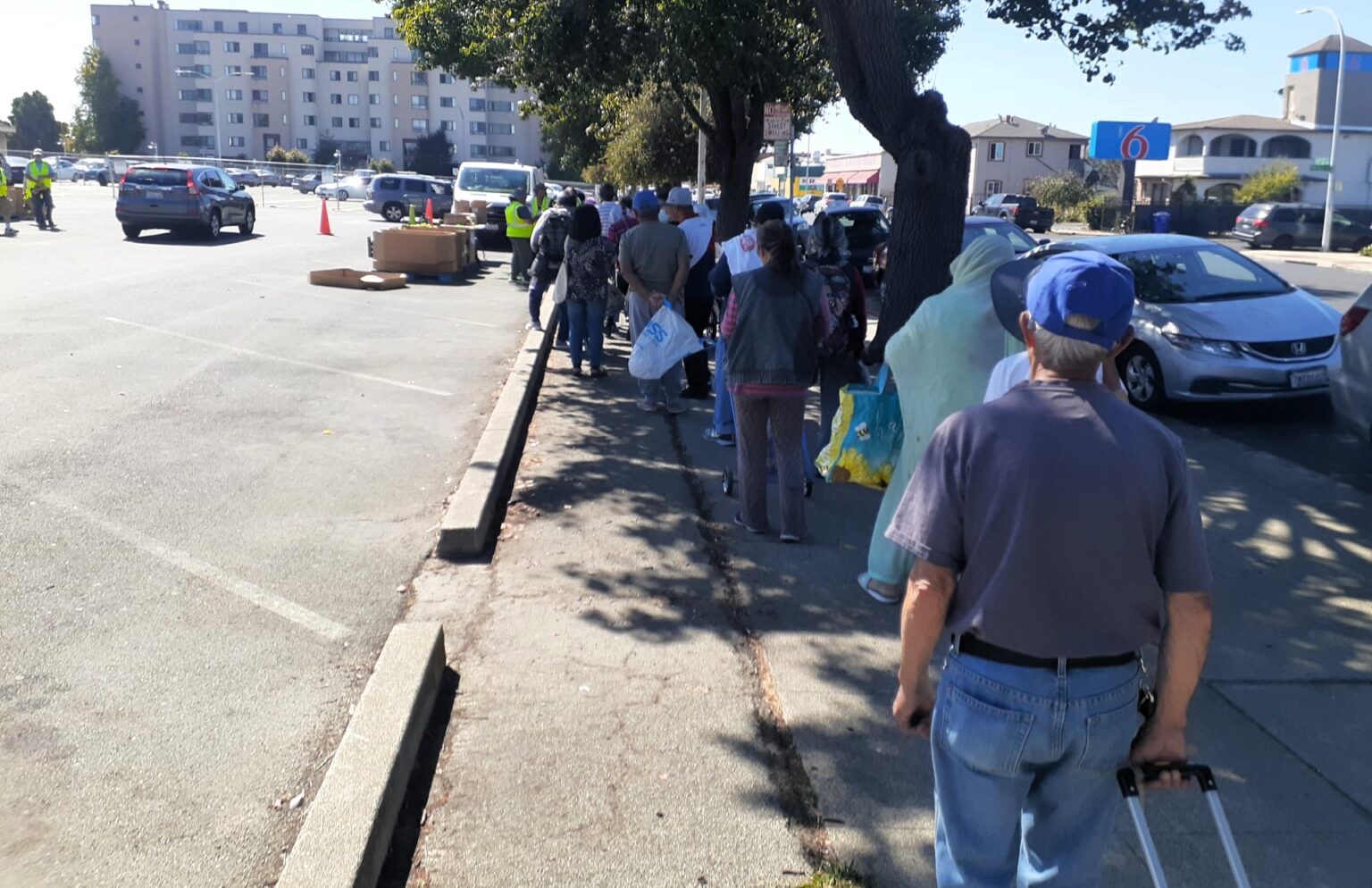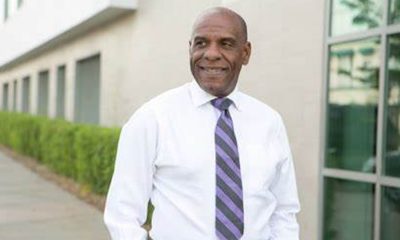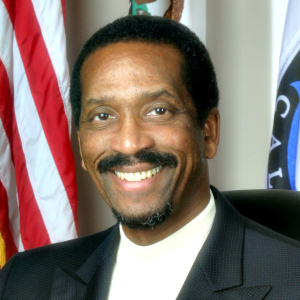Food
Supervisors oppose federal efforts to limit food stamps
WAVE NEWSPAPERS — The county Board of Supervisors voted July 30 to oppose federal efforts to limit food stamp eligibility, which would affect an estimated 40,000 Los Angeles County residents. Supervisor Hilda Solis recommended sending a letter to U.S. Secretary of Agriculture Sonny Perdue and the county’s congressional delegates.
LOS ANGELES — The county Board of Supervisors voted July 30 to oppose federal efforts to limit food stamp eligibility, which would affect an estimated 40,000 Los Angeles County residents.
Supervisor Hilda Solis recommended sending a letter to U.S. Secretary of Agriculture Sonny Perdue and the county’s congressional delegates.
“The Trump administration is proposing callous rules that would limit Americans’ access to the federal Supplemental Nutrition Assistance Program, referred to as CalFresh in California,” Solis said. “Such action would affect 3 million Americans who rely on the nation’s most successful anti-poverty program to access healthy food. L.A. County recognizes that food insecurity is a matter of public health, and these heartless proposed rule changes would have a pronounced effect on county residents.”
The proposed rule would take away states’ ability to extend eligibility to households with incomes up to 200% of the federal poverty line or roughly $50,000 a year for a family with two children. That flexibility was granted by Congress in 1996.
Federal officials estimate that nearly 8% of beneficiaries qualify under expanded eligibility, which the Department of Agriculture calls a “loophole.” The department pointed to the case of a Minnesota millionaire who qualified for food stamps after applying to highlight what he viewed as taxpayer waste.
“Too often, states have misused this flexibility without restraint,” U.S. Secretary of Agriculture Sonny Perdue said in a statement issued last week. “The American people expect their government to be fair, efficient and to have integrity — just as they do in their own homes, businesses and communities. That is why we are changing the rules, preventing abuse of a critical safety net system, so those who need food assistance the most are the only ones who receive it.”
The Agriculture Department also wants to exclude beneficiaries with more than $2,250 in eligible assets from receiving food stamps. The department estimates an overall savings of more than $2 billion annually from the proposed changes.
The county’s Department of Public Social Services estimates that more than 120,000 California households — including 40,000 in Los Angeles County — would be affected.
Members of the board and education advocates said children would be the biggest losers.
An estimated 500,000 children nationwide could lose their automatic eligibility for free school meals under the proposal, according to Los Angeles County Office of Education Superintendent Debra Duardo.
“Research has shown that access to free and reduced-price school meals allows low-income students to stay engaged and learn,” Duardo said in a statement issued after the board vote. “Removing this access would have a detrimental impact on student academic performance and success in school.
Supervisor Mark Ridley-Thomas said that children represented 60% of CalFresh beneficiaries in 2016, the last year for which data is available.
“Those who stand to lose … are those who are the most vulnerable among us,” Ridley-Thomas said, which includes seniors on fixed incomes and community college students, many of whom experience “food insecurity.”
Food insecurity is defined as a lack of reliable access to enough affordable, nutritious food.
Supervisor Sheila Kuehl said the proposed change is part of a larger pattern.
“It feels like the current president has announced a program called the War on the Impoverished,” Kuehl said, drawing a contrast with President Lyndon B. Johnson’s declaration of a War on Poverty in 1964.
The proposed rule change is subject to a 60-day public comment period.
“Those who stand to lose … are those who are the most vulnerable among us.”
This article appeared in the Wave Newspapers.
Bay Area
Gettin’ & Stayin’ on the Good Foot in 2024 With Kra Food Flow
In a world where nutrition advice is constantly conflicting and overwhelming, we are often left confused. Trendy diet fads, outdated guidelines like “eat 6 servings of grains,” and misleading labels that read “0 grams trans fat,” but may be up to 0.5 grams of trans fat in reality, make it challenging to navigate the truth. This misinformation is often driven by “food dealers” consumed with making a profit rather than health, which leads to considerable health problems. But there’s a better way. What if you could tap into a more genuine, time-tested source for your diet? An ancient and groundbreaking ancestral approach?

By nanaama raine, MS, RD
Do you know who understands your diet best? It’s not who you think!
In a world where nutrition advice is constantly conflicting and overwhelming, we are often left confused. Trendy diet fads, outdated guidelines like “eat 6 servings of grains,” and misleading labels that read “0 grams trans fat,” but may be up to 0.5 grams of trans fat in reality, make it challenging to navigate the truth. This misinformation is often driven by “food dealers” consumed with making a profit rather than health, which leads to considerable health problems.
But there’s a better way. What if you could tap into a more genuine, time-tested source for your diet? An ancient and groundbreaking ancestral approach?
Meet your ‘kra’.
Kra: Your Inner Nutritionist
Your ‘kra’ acts as your inner health expert, deeply attuned to what your body genuinely needs. It’s a holistic approach, perfectly aligning with who you are and your life’s purpose. Connecting with your kra is deeply personal and a unique experience for each individual that involves learning to recognize and trust signals (communication) your body and mind (and spirit) send you.
It might be an inner voice, vivid mental images, or sensations in different parts of your body, like your belly, feet, hands, forehead, chest or throat. For me, it comes as sensations in my throat, gut, or even as a radiant feeling that flows through me. Pay attention to how certain foods make you feel – energized or sluggish? These consistent signals clearly tell you your kra’s likes/dislikes regarding food. In embracing and synchronizing with your Kra Food Flow, you navigate your nutritional path with clarity, confidence and wisdom.
Kra Food Flow: Ancestral Wisdom
Kra Food Flow is an ancient, transformative way of eating, rooted in African traditions. It’s about following your inner guidance to determine what, when, and how to eat for your unique being. This journey connects you with your ancestral energy, brings peace of mind/clarity in thinking, and guides you to your ‘kra weight’, a state where your body and spirit are at their strongest and most vibrant.
My Journey with Kra Food Flow
Through my extensive study and practice as a dietitian, I’ve discovered that while functional nutrition is a closer approach to personalized diet, it’s your own kra that holds the real key to true harmony. My personal experience during pregnancy, gaining and naturally losing 70 pounds, shows how effective Kra Food Flow is. This approach is life-changing, not just for me, but for many indigenous communities in West Africa and the Bay Area.
Water: Your First Step
Begin your journey with a simple yet powerful step – water. Spiritually, water is a bridge to connect with your kra. It’s also often the first signal, a call for hydration that your body and kra need.
As you drink water, observe how your body and mind respond. Feeling satisfied, hydrated, and clear in your mind are clear indications from your kra. When you practice being mindful and attentive to your body’s hydration needs, you can start understanding and responding to your kra’s subtle cues for food.
Join the Movement
This year, commit to aligning with your Kra Food Flow, starting with the important act of drinking water. Aim for at least half your body weight in ounces of water each day. For instance, if you weigh 170 pounds, that’s about 85 ounces of water per day.
Visit www.flowfolx.com to join the movement and take the pledge. Get yourself a large water bottle and own your flow by sipping water throughout the day easier. Let’s awaken the powerful ancestral energy within you and illuminate our minds, bodies, and spirits.
The Association of Black Psychologists (ABPsi) Bay Area Chapter is committed to providing the Post Newspaper readership with monthly discussions about critical issues in Black Mental Health. The ABPsi-Bay Area Chapter is a healing resource. Readers are welcome to join us at our monthly chapter meetings every 3rd Saturday via Zoom. We can be contacted at bayareaabpsi@gmail.com.
Community
Taxes on Sugar-Sweetened Drinks Drive Decline in Consumption
A new study by researchers at UC Berkeley—including those at UC Berkeley School of Public Health and the Department of Agricultural and Resource Economics—and elsewhere shows that after excise taxes were placed on sugary beverages, purchases declined dramatically and steadily across five American cities.

By Elise Proulx
UC Berkeley News
A new study by researchers at UC Berkeley—including those at UC Berkeley School of Public Health and the Department of Agricultural and Resource Economics—and elsewhere shows that after excise taxes were placed on sugary beverages, purchases declined dramatically and steadily across five American cities.
Although other studies have evaluated the impact of beverage excise taxes—taxes on a per ounce basis–in a single city, this is one of the first that estimates the impact of local excise taxes on purchases and prices of sugar-sweetened beverages across multiple large cities.
The cities included Boulder, Philadelphia, Oakland, Seattle, and San Francisco, all of which implemented taxes between Jan. 1, 2017, and Jan. 1, 2018.
Sugar-sweetened beverages—such as sodas, fruit drinks, sports drinks, energy drinks, and sweetened coffee drinks—are the leading source of added sugars in the American diet, according to the Centers for Disease Control and Prevention.
They are associated with serious negative health outcomes, including type 2 diabetes, obesity, heart disease, kidney disease, non-alcoholic liver disease, gum disease, tooth decay, and other conditions.
Taxes on these types of beverages are promoted as a key policy to hold beverage companies accountable for and reduce the health harms associated with their products, but comprehensive analyses of such taxes have been difficult due to the absence of sufficiently large samples of data and methodological limitations.
“Estimating a more general, more accurate impact of local sugar-sweetened beverage taxes in the U.S. provides greater insight into the overall effectiveness of these taxes,” said study lead author, Scott Kaplan, who is an economics professor at the United States Naval Academy.
Kaplan received his PhD from the UC Berkeley Department of Agricultural and Resource Economics in 2021. “This study may better inform the potential effectiveness of SSB taxes at the state or federal level.”
This new study builds on an earlier study that looked only at data from the city of Oakland.
The new study found that retail prices of sugar-sweetened beverages increased by 33.1% over the two years following tax implementation in each city studied, and that there was a corresponding decrease in purchases of 33% over the same timeframe.
The price increase and purchase decreases appeared immediately after the taxes were implemented and continued to be sustained months later. At the same time, there was no evidence that consumers were traveling to bordering areas without sweetened beverage taxes to make purchases there.
This study’s findings suggest that “these taxes are quite effective in terms of health outcomes and societal cost-savings,” said Kaplan. He hopes this may lead to similar policy action in other locations across the country, and at the state and national levels, as was done with tobacco taxes.
A previous study co-authored by Dr. Kristine A. Madsen of UC Berkeley School of Public Health showed that tax revenue from sugar-sweetened beverage (SSB) excise in seven cities were used to support initiatives to improve community health, develop human and community capital, and advance equity.
Authors include: Scott Kaplan, US Naval Academy; Justin S. White, Boston University School of Public Health, Kristine A. Madsen and Sofia B. Villas-Boas, UC Berkeley; Sanjay Basu, University of Toronto; Dean Schillinger, UCSF
This work was supported by grants from the National Institute on Diabetes and Digestive and Kidney Diseases (R01 DK116852 and 2P30 DK092924), The California Endowment, the UCSF Diabetes Family Fund, and the Centers for Disease Control and Prevention’s National Center for Chronic Disease Prevention and Health Promotion (U18DP006526).
Activism
Long Food Lines in Richmond as Residents Endure Rising Costs
In the last eight months, the Food Bank of Contra Costa and Solano has seen demand for its services increase by about 50,000 people, to roughly 400,000, according to Jeremy Crittenden, spokesperson for the Food Bank of Contra Costa and Solano. The demand is only expected to increase, he said.

By Mike Kinney
Food Bank volunteers greeted long lines of people waiting in their cars and along the sidewalk at Thursday’s bi-monthly food distribution event in the Richmond Civic Center parking lot.
Starting Oct. 12, the Food Bank of Contra Costa and Solano’s regular distribution will no longer provide drive-thru services and will only offer walk-up due to safety reasons.
Richmond Standard spoke with a couple of recipients waiting in line on Sept. 28. They expressed gratitude that the food bank will continue to distribute here on a regular basis, particularly as the costs to live have increased.
“I am grateful that we are able to get food here today,” said Ramon Martinez, who was waiting in line. Martinez described food prices as increasingly outrageous.
Added Jessica Johnson, “The closer we get to the holidays, the prices for food will be skyrocketing again. Having the ability to come here and get food is wonderful and really helps my family get through the next couple of weeks.”
In the last eight months, the Food Bank of Contra Costa and Solano has seen demand for its services increase by about 50,000 people, to roughly 400,000, according to Jeremy Crittenden, spokesperson for the Food Bank of Contra Costa and Solano. The demand is only expected to increase, he said.
“We are aware that we are helping families that are struggling to buy groceries with our pantry distribution sites when we come to their community,” Crittenden said. “And now with a pending shutdown of the federal government, we know there will be more people in need of our food distribution for their families.”
Recipients at distributions can acquire bags of non-perishable foods, fresh produce and proteins. As an example, people received eggs, cheese, ground turkey meat, bags of onions, potatoes and apples, last week. Other items included cans of vegetables and pasta, a package of chicken breast meat and a box of macaroni and cheese.
Distributions will continue to be held in the Richmond Civic Center at 25th Street and Barrett Avenue on the second and fourth Thursdays from noon to 1 p.m. Organizers say it is important to bring one or two bags with handles.
Of course, the Food Bank of Contra Costa and Solano also provides regular distributions at other locations in Richmond and around the County. To view a list of distributions, including times, locations and other details, go to https://www.foodbankccs.org/map-city/richmond/
The Food Bank thrives with help from the community, particularly thanks to financial donations and volunteering.
“Volunteers are the heart of how we are able help and support families and people in need,” Crittenden said. “Volunteering and making a difference in people’s lives is a beautiful feeling.”
To find out ways to donate, go to https://www.foodbankccs.org/give-help/donate/ For volunteer opportunities, go https://volunteer.foodbankccs.org/
-

 Activism4 weeks ago
Activism4 weeks agoOakland Post: Week of March 27 – April 2, 2024
-

 #NNPA BlackPress4 weeks ago
#NNPA BlackPress4 weeks agoCOMMENTARY: D.C. Crime Bill Fails to Address Root Causes of Violence and Incarceration
-

 #NNPA BlackPress4 weeks ago
#NNPA BlackPress4 weeks agoMayor, City Council President React to May 31 Closing of Birmingham-Southern College
-

 #NNPA BlackPress4 weeks ago
#NNPA BlackPress4 weeks agoBeloved Actor and Activist Louis Cameron Gossett Jr. Dies at 87
-

 Community1 week ago
Community1 week agoFinancial Assistance Bill for Descendants of Enslaved Persons to Help Them Purchase, Own, or Maintain a Home
-

 Activism3 weeks ago
Activism3 weeks agoOakland Post: Week of April 3 – 6, 2024
-

 Business1 week ago
Business1 week agoV.P. Kamala Harris: Americans With Criminal Records Will Soon Be Eligible for SBA Loans
-

 Activism2 weeks ago
Activism2 weeks agoOakland Post: Week of April 10 – 16, 2024






















































